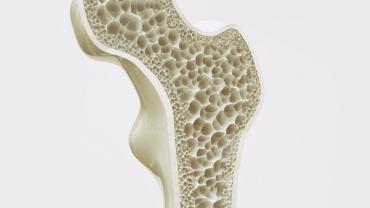
Evidence suggests that vitamin D deficiency may affect approximately 1 billion individuals globally, and insufficiencies in vitamin D may affect more than 40% of the general population. Vitamin D helps support healthy bone mineralization and calcium homeostasis regulation.
Vitamin D is essential for bone formation during childhood development. Deficiencies in vitamin D in the pediatric population may be a result of inadequate nutritional intake, decreased absorption, darker skin pigmentation, lack of sun exposure, and genetic conditions. Studies have shown that supplementation with vitamin D may help promote normal bone development and a normal immune system in pediatric populations.
Bone fracture risk due to minor trauma has been associated with vitamin D deficiencies in adult populations, but less research is available for pediatric populations. A recently published population-based, prospective case-control, randomized, cross-sectional, single-blinded study by Herdea and colleagues explored the potential connection between vitamin D status and bone fracture risk due to minor trauma in children. The study involved 688 children between ages 2 and 17 years with a history of bone fracture. The groups were divided into a control group and a treatment group receiving vitamin D and calcium supplementation for 6 months. A reference cohort consisted of more than 800 children without a history of bone fracture, but who were hospitalized for respiratory or gastrointestinal conditions.
Study results indicate that blood levels of vitamin D increased from an initial mean of 23.92 ng/mL to 44.76 ng/mL after 6 months of supplementation. After statistical analysis, the risk of certain bone fractures in the forearm decreased by 7% for every unit of increase in vitamin D status. Improvements were observed in the fracture healing process, including faster bony callus formation to be greater in the treatment group.
Strengths in study design include a relatively large population and clearly defined biometrics. Limitations include the time frame of treatment and follow-up and the potential confounding factor of calcium as an addition to the supplement. However, study results indicate that calcium blood levels were not increased in a significant manner in the treatment group, so this may be unlikely.
More research is indicated, particularly in pediatric populations and for longer durations. However, evidence suggests that vitamin D status may play a role in children’s bone health. Sources of vitamin D are sun exposure, certain foods (such as the flesh of fatty fish), supplementation, and certain fortified foods. Research indicates that supplementation with vitamin D3 can be more effective at raising and maintaining vitamin D levels in the body rather than vitamin D2.
By Dr. C Ambrose, ND, MAT